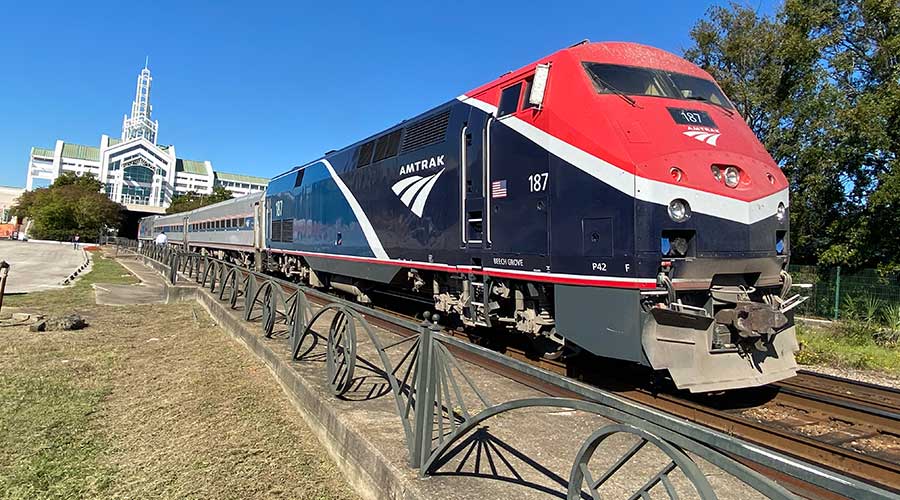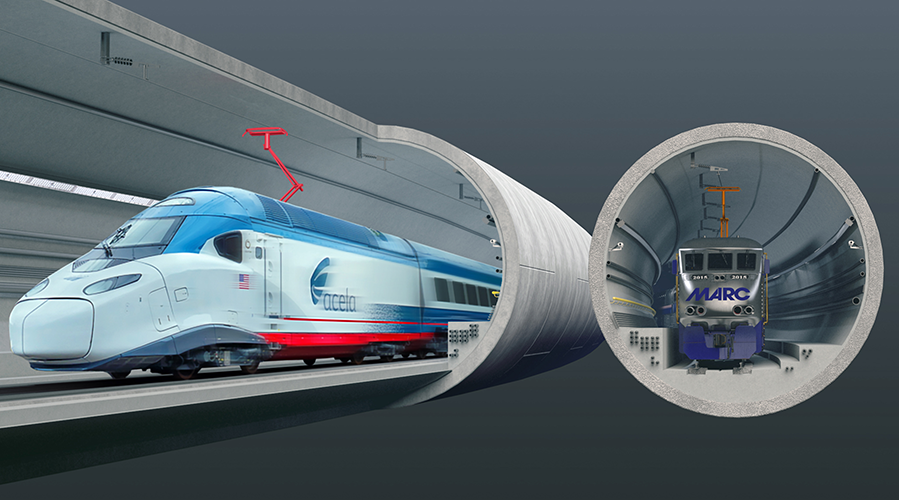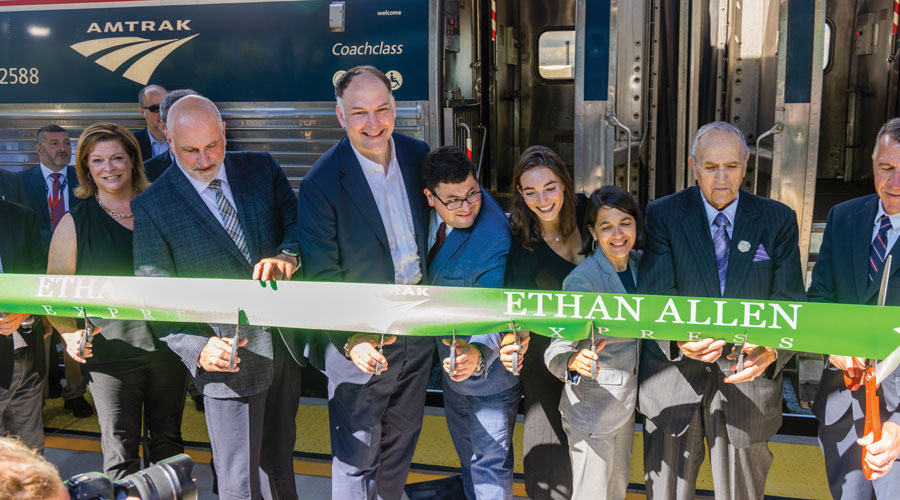Stay updated on news, articles and information for the rail industry
 railPrime
railPrime
December 2019
Rail News: Amtrak
Amtrak at (nearly) 50: The railroad faces its next chapter
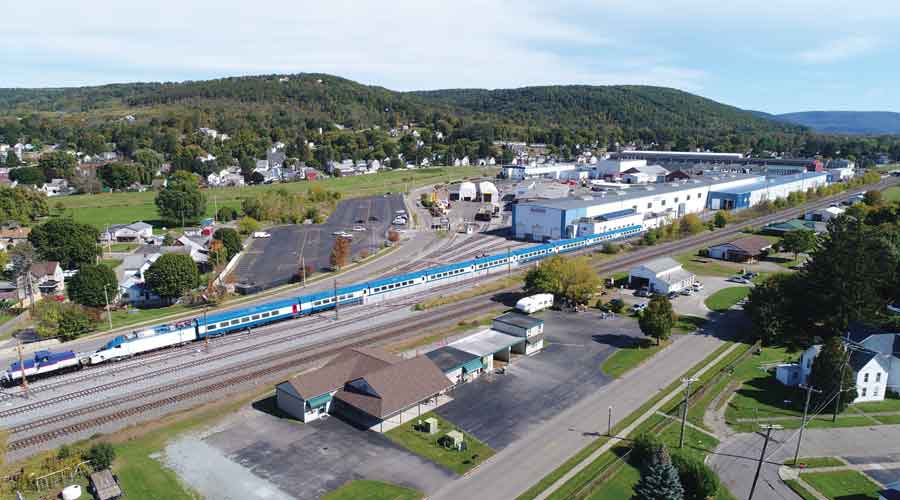
By Julie Sneider, senior associate editor
As Amtrak heads toward the 50th anniversary next year of its creation, the nation’s only intercity passenger railroad does so in the best financial condition in its history.
The railroad ended its fiscal-year 2019 on Sept. 30 setting new records for ridership and operating revenue, and an operating loss of $29.8 million, the lowest in its history, Amtrak executives say.
How did Amtrak do it? By cutting costs, growing revenue, improving safety and increasing ridership. The FY2019 performance indicates Amtrak is on track to reach its financial goal of breaking even by FY2021, executives believe. And as they envision the railroad’s next 50 years, they’re drafting a blueprint for how Amtrak could and should evolve into a modern, intercity passenger-rail service ready to meet the nation’s future transportation needs.
The plan, which will be presented to Congress as it gears up to tackle major surface transportation reauthorization legislation in 2020, will address where Amtrak can make the biggest impact, especially outside the Northeast Corridor and in regional shorter-route corridors. It also will propose what Amtrak officials believe the railroad will need in federal support to achieve its goals over the next several years.
“Fifty years is a landmark for us, a major achievement and a pivotal point for the company,” says Senior Executive Vice President and Chief Operating and Commercial Officer Stephen Gardner. “We approach 2020 thinking about the way that Amtrak can provide even more value and utility across the nation, and how we can continue what has been a pretty remarkable trend over the past decade of growth. We see a period in which passenger rail — and Amtrak in particular — has more to do than we’ve been able to do in the first 50 years.”
Amtrak was established in 1970 by the Congressional Rail Passenger Service Act, which consolidated the passenger service of financially troubled private rail carriers into one quasi-government service. In May 1971, the National Railroad Passenger Corp. began doing business as Amtrak, serving 43 states with a total of 21 routes. At the time, some people believed Amtrak’s creation was the federal government’s way of phasing out intercity passenger-rail service. By having the federal government take over intercity passenger rail, interest in U.S. rail travel eventually would fade, or so the theory went.

—Stephen Gardner, Amtrak
But those who believed the nation’s transportation future rested on interstate highways and the airlines were shortsighted: Nearly 50 years later, Amtrak is still chugging along. When announcing the FY2019 financial results on Nov. 8, the railroad’s executives touted the operational and financial improvements made as part of Amtrak’s turnaround initiated under former Norfolk Southern Railway leader Wick Moorman, who served as president and chief executive officer from September 2016 to July 2017 and co-CEO until December 2017, and current President and CEO Richard Anderson.
Breaking financial, ridership records
According to preliminary financial results, the railroad reached a record 32.5 million customer trips in FY2019, which was a year-over-year increase of 800,000 passengers; set a record total operating revenue of $3.3 billion, which was up 3.6 percent YOY; logged an all-time-low operating loss of $29.8 million, an 82.6 percent improvement from FY2018’s loss; and recorded a capital investment of $1.6 billion, a 9.4 percent increase over the previous fiscal year’s budget.
Moreover, the railroad hit some key safety targets, including launching an aviation industry-based safety management system (SMS) and expanding positive train control (PTC) operations.
A former Delta Airlines CEO, Anderson has sought to apply some of the airline industry’s business strategies to Amtrak, which has struggled with safety — the railroad experienced several fatal accidents in recent years — and the ability to cover its costs, maintain a state of good repair, and upgrade its infrastructure and fleet. Among Anderson’s first steps was to bring in Chief Safety Officer Ken Hylander in early 2018 to put the SMS in place to address what the National Transportation Safety Board had described as a “weak” and “failing” safety culture at Amtrak.
The SMS now guides every aspect of the railroad’s safety program, Anderson told members of the House Subcommittee on Railroads, Pipelines and Hazardous Materials during a Nov. 13 hearing on Amtrak’s future.
“Amtrak is the first American railroad to adopt this proven method from the commercial airline industry, and we already see impressive results from the effort, such as a 26 percent reduction in customer incidents, 72 percent fewer serious employee injuries, a 10 percent reduction in Federal Railroad Administration reportable injuries and a 3 percent reduction in trespasser and grade crossing incidents,” Anderson said, according to a transcript of his testimony.
In addition to preventing death and injury, having a strong safety program helps Amtrak save money, says Senior EVP Gardner.
“There is no such thing as a well-run company that is not a safe company,” he says. “I think it’s no accident that you see improved safety performance and improved financial performance together.”
Besides elevating safety practices, Amtrak has embarked on cost-cutting strategies such as tighter headcount management; reducing waste and unnecessary inventory; and improving procurement times, crew scheduling and fuel management. Regarding the latter, Amtrak saved $2 million in FY2019 by reducing locomotive idling costs, Gardner says.
Moreover, Amtrak officials attributed capital investments aimed at making passengers happier and more comfortable as a factor in the railroad’s stronger financial performance. Investments over the past year included $713 million in completed state-of-good-repair infrastructure projects; an extensive refresh of train interiors on the Acela fleet and Amfleet II cars along the East Coast; $110 million in new technology, including an update to Amtrak’s mobile app; improved reliability and performance; and station upgrades.
Another way to attract and retain ridership is by renewing and replacing Amtrak’s aging fleet, Gardner says. So, manufacturing continues at the Alstom plant in Hornell, New York, on Amtrak’s next-generation, high-speed trainsets for the Acela Express service. The trains are slated to launch in 2021.
Also, in December 2018 Amtrak awarded an $850 million contract to Siemens Mobility for 75 new locomotives to replace some of the aging national network fleet, and in January 2019 issued a request for proposals for a new fleet of single-level passenger-rail vehicles to replace the over 40-year-old Amfleet I rail cars.
Other ways Amtrak aims to boost ridership and revenue include new products and services. For example, in FY2019 Amtrak debuted the Acela Nonstop service between New York and Washington, D.C.; launched the Valley Flyer, a state-supported rail service in Massachusetts; added trips on the Northeast Regional and Downeaster routes; and added a Green Bay-Milwaukee Amtrak Thruway bus service to connect riders with the Chicago-Milwaukee Hiawatha route.
“We are feeling really good about what we’ve been able to accomplish in FY2019, so part of our strategy is to keep the momentum going, keep pushing in all directions,” Gardner says.
Challenges to Amtrak’s progress remain, however, with one of the biggest being on-time performance (OTP). An Amtrak inspector general report issued in October found that in 2018, 46 percent of long-distance trains arrived on time, state-supported trains arrived on time 81 percent and NEC trains arrived on time 78 percent. Improving the railroad’s OTP on each route by 5 percentage points would result in $8.2 million in reduced costs and $3.9 million in increased revenue over just one year, according to the inspector general.
Amtrak execs point out that the railroad owns most track along the NEC, which gives it more control over operations. But, they argue, the OTP problem is driven primarily by delays caused by host freight railroads that own most of the lines on which Amtrak operates. Amtrak leaders have long complained that the host railroads often ignore federal law that requires freight railroads to give preference to passenger trains operating on the hosts’ rail lines. (Last month, U.S. Sen. Dick Durbin of Illinois introduced a bill that would allow Amtrak to take the freight railroads to court to enforce the law.)
Host railroads were responsible for about 59 percent of Amtrak delays in recent months, according to the report. Still, the inspector general noted that Amtrak does have control over other factors — such as late-arriving crews or mechanical problems — that sometimes cause its trains to be late.
“On-time trains has been a long-term challenge and remains a challenge, but it’s one we continue to focus on and try to improve,” Gardner says.
The other big challenge that’s part of Amtrak’s past, present and future is capital funding. Amtrak execs hope the improving finanacial picture demonstrates to Congress and the public that Amtrak is making wise use of its federal subsidies.
Amtrak received about $1.5 billion in federal appropriations in 2017 and $1.9 billion in 2018, according to a Congressional Budget Office (CBO) report.
But even that funding level is just the “tip of the iceberg” in terms of what Amtrak needs to meet its multifaceted mission, Gardner says.
Planning for a new generation
To be sure, Amtrak faces those challenges as it tries to refashion itself to meet the expectations of new generations of riders. The railroad’s new national network plan that’s being drafted for short and long distance services will identify markets that have the greatest potential for new or enhanced intercity rail service, Amtrak officials say.
As part of drawing up the plan, Anderson’s team has met with various states’ departments of transportation and other stakeholders to learn their preferences. Amtrak expects to wrap up the plan next year as part of the the railroad’s request to Congress under the next surface transportation bill.
“Suffice it to say, we see opportunities for growth across the continental United States,” Gardner says. “But there are some obvious places — particularly in the Southeast, the Mountain West and the South — where you see growth in cities and a dearth of Amtrak service.”
For example, in six of the eight major metro areas that have grown the fastest since 1971 — Tampa, Florida, Atlanta, Denver, Phoenix, Houston and Riverside, California — Amtrak trains stop just one or three days a week.
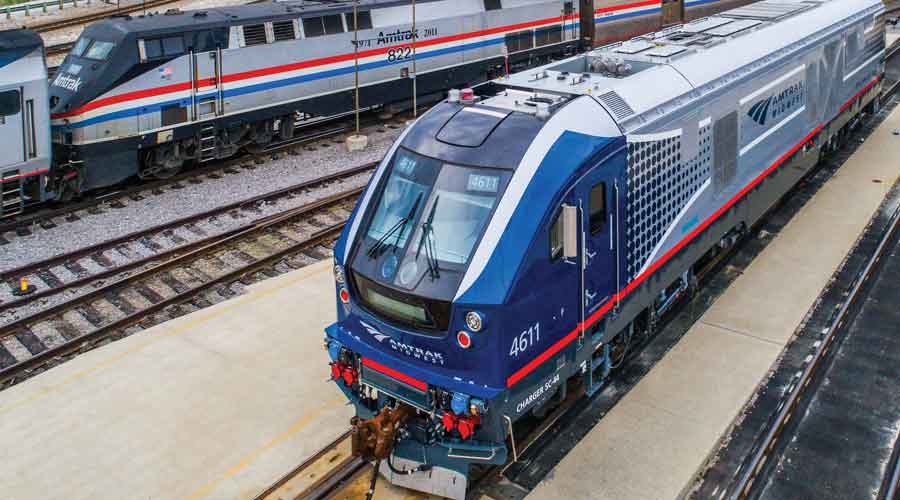
At the same time, Amtrak spends a big chunk of its federal funding on long-distance trains. In FY2019, long-distance routes accounted for 38 percent of the railroad’s national train service operating costs, while carrying just 14 percent of its passengers.
“While [long-distance routes] play an important role in some small communities, they do not meet the needs of travelers in the growing cities and short-distance corridors where they provide the only Amtrak service,” Anderson said in his congressional testimony.
Amtrak’s plan for the future is sure to disappoint some longtime fans of the railroad, particularly if changes are made to some long-distance routes. But Amtrak execs say the trains have to go where the most people are.
“The need for [rail] service has never been greater, especially in short-distance corridors between major cities that are too far to drive and too short to fly,” Anderson said. “All the trends suggest that demand for such service will only continue to grow.”
Email comments or questions to julie.sneider@tradepress.com.
Keywords
Browse articles on Amtrak Amtrak history fiscal-year 2019 financial performance Stephen Gardner Richard Anderson surface transportation reauthorization Acela trainsets Siemens locomotives Congress Congressional Rail Passenger Service Act long-distance routes Northeast CorridorContact Progressive Railroading editorial staff.


 2025 MOW Spending Report: Passenger-rail programs
2025 MOW Spending Report: Passenger-rail programs
 Gardner steps down as Amtrak CEO
Gardner steps down as Amtrak CEO
 Guest comment: Oliver Wyman’s David Hunt
Guest comment: Oliver Wyman’s David Hunt
 Women of Influence in Rail eBook
Women of Influence in Rail eBook






